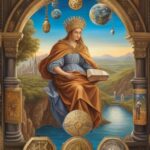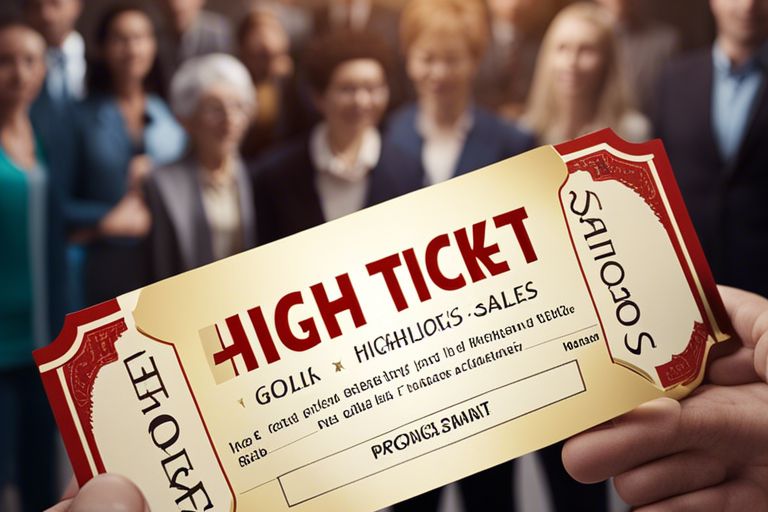NFTs Vs. Traditional Art – A Comparison Of Value And Accessibility
NFTs have shaken the art world to its core, challenging the perception of value and accessibility in creativity. In this analysis, we explore into the intricate dynamics of NFTs versus traditional art, exploring the transformative impact of blockchain technology on the art market. From the democratization of art ownership to the potential risks of forgery and market volatility, we uncover the hidden truths behind these two distinct yet entwined art forms.
Value Perception
The Emotional Value of Traditional Art
For centuries, traditional art pieces have held a deep emotional value for collectors and art enthusiasts. The physical presence of a painting or sculpture can evoke strong feelings of connection, nostalgia, and inspiration. The creative process, the history behind the piece, and the artist’s intentions all contribute to the emotional value that traditional art holds.
The Speculative Value of NFTs
Speculative value plays a significant role in the world of NFTs, where digital assets are bought and sold as investments. The scarcity and uniqueness of each NFT, coupled with the potential for future appreciation, drive the speculative value of these digital artworks. This dynamic market presents opportunities for high returns, but also poses risks due to its volatile and unregulated nature.
This rapidly growing market has attracted a new generation of art collectors and investors, drawn to the potential for high profits in a digital landscape. However, the lack of physical ownership and concerns about authenticity and copyright raise questions about the long-term viability of NFTs as a store of value.
Accessibility and Ownership
Democratizing Art with NFTs
While NFTs have sparked controversy and debate, one undeniable advantage they offer is the potential to democratize art. The blockchain technology behind NFTs allows artists to directly connect with a global audience, removing the barriers of traditional art brokers and gatekeepers. This newfound accessibility empowers artists to showcase their work to a broader audience and receive fair compensation for their creations.
The Elitism of Traditional Art Markets
Traditional art markets have long been criticized for their exclusivity and elitism, where only a select few artists gain access to prestigious galleries and auctions. This system often results in high prices that put original artworks out of reach for the majority of art enthusiasts. As a result, the traditional art world has been seen as catering primarily to wealthy collectors and investors, reinforcing a cycle of elitism and inaccessibility.
OwnershipWhile traditional art ownership is often limited to physical display or storage, NFTs provide a groundbreaking way for individuals to own digital art. The use of blockchain technology ensures secure ownership and provenance of digital assets, granting collectors the ability to buy, sell, and trade art with unprecedented ease and transparency. This shift in ownership dynamics has the potential to revolutionize the art industry, making art more accessible to a wider audience and challenging the traditional notions of art ownership.
The Role of Technology
Blockchain and the Digital Art Revolution
Little did we know that a technology called blockchain would revolutionize the art world. An incorruptible digital ledger that ensures transparency and authenticity, blockchain has paved the way for the rise of NFTs and digital art.
The Impact of Social Media on Art Appreciation
Media has transformed the way we consume art, making it more accessible and interactive. Social media platforms have enabled artists to showcase their work to a global audience instantly, fostering a new era of art appreciation.
Another key aspect is the democratization of art criticism and curation through social media. Art enthusiasts can engage with a broader range of art styles and artists, shaping trends and creating a more inclusive art community.

The Future of Art
Will NFTs Replace Traditional Art?
Traditional art has stood the test of time, with its physical presence and historical significance. While NFTs are gaining traction, it’s unlikely they will completely replace traditional art. The emotional connection and tangible experience of owning a physical piece remain unparalleled.
A Hybrid Model for the Digital Age
On the other hand, a hybrid model merging NFTs with traditional art may shape the future. Creators can leverage digital formats to reach a broader audience while maintaining the exclusivity of physical artworks. This approach combines the best of both worlds, offering increased accessibility and value.
Digital advancements allow for unique art experiences, creating a new dimension for artists and collectors to interact and transact. The hybrid model could pave the way for a more diverse and inclusive art world, where innovation and tradition coexist harmoniously, shaping the future art landscape.
Final Words
With these considerations in mind, the comparison between NFTs and traditional art reveals a nuanced landscape of value and accessibility. While NFTs provide digital ownership and a new platform for artists, traditional art continues to hold value in its physical presence and historical significance. Both forms offer unique benefits and challenges, catering to different audiences and preferences. As the art world evolves, the conversation around NFTs and traditional art will undoubtedly continue to shape the future of artistic expression and ownership.
FAQ
Q: What are NFTs?
A: Non-fungible tokens (NFTs) are unique digital assets that are stored on a blockchain, making them one-of-a-kind and not interchangeable with other tokens.
Q: What is traditional art?
A: Traditional art refers to physical art forms created by artists using materials like paint, canvas, clay, and other tangible mediums.
Q: How do NFTs differ from traditional art in terms of value?
A: NFTs derive their value from their digital scarcity and uniqueness, while traditional art’s value is influenced by factors such as artist reputation, historical significance, and physical condition.
Q: What is the accessibility of NFTs compared to traditional art?
A: NFTs offer greater accessibility to a global audience as they can be bought, sold, and traded online, whereas traditional art may be limited to physical galleries or auctions.
Q: Can NFTs and traditional art coexist in the art market?
A: Yes, NFTs and traditional art can coexist, with each offering unique benefits to collectors and artists based on their preferences and goals.
Q: What are some challenges associated with NFTs and traditional art?
A: Challenges with NFTs include issues of copyright, environmental concerns related to blockchain technology, and volatility in the market. Traditional art faces challenges such as authentication, provenance, and preservation.
Q: How can collectors determine the value of NFTs versus traditional art?
A: Collectors can assess the value of NFTs by considering factors like rarity, artist reputation, and demand in the digital art market. Traditional art’s value is evaluated based on artist reputation, provenance, condition, and art market trends.
![]()












